by Megan | Jan 20, 2024 | AAC, blog, tips, training
I want to share my favorite AAC tip with you…
This tip is specifically for those who use an iPad as their communication device. If you have worked with anyone, specifically children, who use an iPad, you know that the “home” button can be very distracting, especially since pressing it will take you out of your communication app. If only there were a way to keep that from happening…enter “Guided Access”!
Guided access is a built-in setting within the accessibility features of all iPads. Once it is set up and enabled, the home button is essentially disabled, and if a user presses the home button, they will be prompted to enter a passcode to disable guided access. Before I continue rambling on about the greatness of guided access, let me show you how to set it up.
Open “settings” on the iPad.
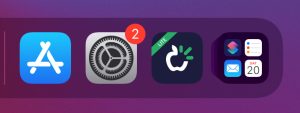
On the left, scroll down to “accessibility” and select it.
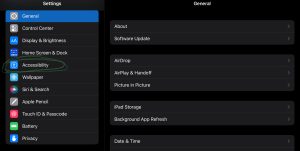
On the right, scroll down to “guided access” and select it.
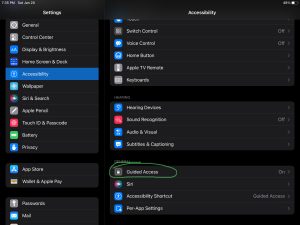
Once “guided access” is selected you can select “passcode settings” to set a passcode that will need to be entered to disable “guided access”. (You will be asked to re-enter the passcode to confirm.)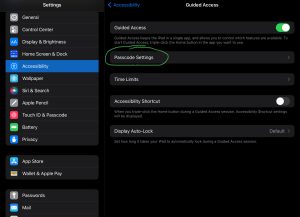
Once your passcode is set up, navigate to the communication app and open it.
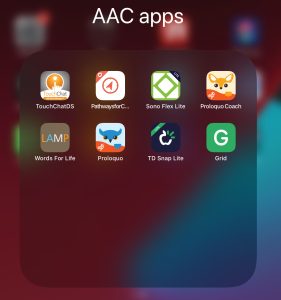
With the communication app open, click the home button three times (triple click) to activate “guided access”.
When guided access is enabled and the home button is pressed, a written prompt will appear at the top of the screen to triple-click the home button to disable it.
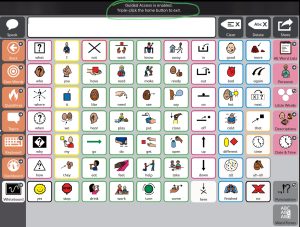
If you triple-click the home button, a pop-up will appear, prompting you to enter the passcode you set during setup.
If you enter the correct passcode, you will be prompted to choose “end” or “resume” guided access.
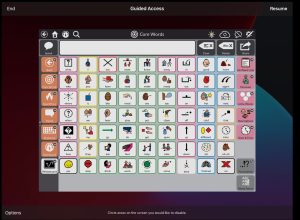
If an incorrect passcode is entered, you will have to wait a designated amount of time before an additional attempt.
Bonus tip!
If the iPad “dies” or runs out of charge, guided access is automatically disabled. Therefore, it never hurts to periodically check to see if guided access is enabled. To do so, just triple-click the home button. If guided access is enabled, the passcode pop-up will appear. If guided access is not enabled, triple-clicking the home button will reactivate it.
by Megan | Jan 13, 2024 | AAC, emergent literacy
How do I get staff to buy into modeling AAC and implementing emergent literacy strategies in their classrooms?
This is one of the questions that I am most frequently asked when talking to other speech-language pathologists (SLPs). While I agree that getting staff buy-in to model AAC and emergent literacy can sometimes feel like a challenge – but, it doesn’t have to! Here’s what I have proposed, introduced, and tried in classrooms I support to help motivate and encourage classroom teachers and staff to continue modeling AAC and implement emergent literacy strategies throughout their day:
- Make sure they understand the terminology.
Special education has 1 BILLION (if not more) acronyms and we often use them so regularly that we forget that everyone may need to learn what they all mean. When talking about different techniques and strategies, take the time to make sure that those you are talking to are clear on what you are saying. It does no good if one or more people leave a discussion about strategies to increase communication and literacy (or anything for that matter) wondering what it was that was discussed and what they can, or should do going forward. If you find yourself using acronyms often, it may be helpful to have a “cheat sheet” or “key” to share that reminds everyone what each acronym stands for.
- Reinforce what they are already doing.
No one likes to only hear what they aren’t doing and what they should do. And, I’m sure there are things that the classroom staff are already doing that are great! It is important to emphasize those things that are going well and that are successful – encouraging others and recognizing what they are doing well goes a long way in building rapport in any relationship!
- Show how they could easily add modeling AAC or emergent literacy into their established routines.
Sometimes, when we hear someone suggest that we “add” something to our day, we immediately stop listening and get defensive. All of us are already doing so much, especially in education, that the idea of adding one more thing is crazy. While this is true, and the last thing we want to do is add more to anyone’s plate – this is a great way to remind those we are supporting that language and literacy are not times of the day – they are always happening and are always around us. Taking the time to show staff simple ways that they can model AAC or implement an emergent literacy strategy into their daily routines can go a long way! Adding in these language and literacy moments doesn’t need to be anything long or time-consuming – it can be a quick mention of the letter of the day while reading instructions, a book, or on a walk about campus, or taking the time to point to a core word or two that naturally comes up during instruction, lunch, etc.
- Ask questions and listen to answers.
This might be the most important tip of all! In all collaborative relationships, it is imperative that everyone involved feels comfortable asking questions and knows that their thoughts, ideas, concerns, etc will be listened to. Take the time to ask questions so you can know how to best support each team, team member, classroom, etc. Ask what their concerns are, how they best learn, what they need more help with, how they like to receive feedback, what area(s) they would like to focus on, etc.
Taking the time to ask these questions and listen to the answers that are given will not only help to build the relationship, it will help guide how you can provide support and feedback as well as know how to help every team member set personal goals surrounding AAC modeling and/or emergent literacy implementation.
- Work together to brainstorm and establish personal goals focusing on these areas.
Once you have established that you are all on the same page, what’s going well, and where more support is needed, it’s time to set some goals. Depending upon how you support classrooms, you may set individual goals with each staff member or you may set goals with the team as a whole, or both. The great thing is that these goals can be personalized to fit everyone’s needs and adjusted as needed. When you are setting these goals, think of it just as you would writing goals for your students, making sure they are meaningful, measurable, and achievable. It’s up to you but I also like to discuss a reward that will be received when a goal is met – to me, this makes it extra motivating and meaningful. A reward could be something physical like a snack food, social such as a shout-out in the staff newsletter, or functional in the form of a set of printed and prepped visuals. Whatever they are, rewards should be as personal as the goals and chosen by the person receiving the reward.
While these are my top 5 tips for helping get classroom buy-in and what has helped me, it is a continual learning process, and keep in mind that some things may need to be added, deleted, tweaked, etc depending upon the teams you are supporting. If you are interested in learning more about this topic and getting access to interest surveys you can give to staff, data sheets, resource links, etc – check out my e-book “AAC & Emergent Literacy Challenge”. This ebook is filled with information on how to get started, strategies to make the challenge successful and fun, questionnaires to gather information and guide challenge creation and implementation, data collection sheets, and more!
If you have additional tips or strategies for classroom buy-in and support – drop them in the comments!

by Megan | Dec 16, 2023 | AAC, aided language input, aided language stimulation, blog, continuing education, core vocabulary, fringe vocabulary, modeling, prompt hierarchy
It’s the busiest time of the year! Wrapping up the year, buying gifts for all you love, finding time to celebrate with all your friends and family, you may feel like you are running around endlessly, the last thing you should have to worry about is making sure you have all of your continuing education units (CEUs) done to renew your licenses and certifications. 🤪
Before you close this window and start running around again, take the time to read to the end of this post, ‘cause I’ve got a way for you to rack up a bunch of CEUs for FREE! **Bonus if you want to learn more about AAC – these CEUs are AAC focused**
Ready to get started? Here we go!

- You will be redirected to a login page where you can create an account or, if you have an account within any Tobii Dynavox or Boardmaker programs, use that account login and password.
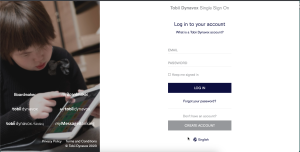
- After you log in you will be redirected to the Learning Hub, where you can start racking up those CEUs! Click on “Course Catalog” to see all the courses offered.
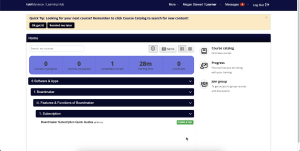
- Once you see the list of courses, you can also open the categories further to see additional specific courses.
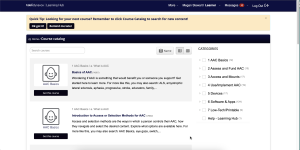
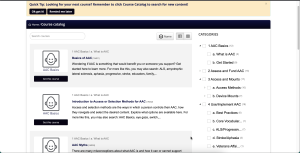
That’s it – you are ready to rack up a bunch of free CEUs to finish out your requirements for the end of the year, or whenever you need it!
If you work through any of these courses and find one that you really like, let us know in the comments so we can check it out too!
by Megan | Dec 10, 2023 | AAC, blog
Names are important!
However, just like words, the pronunciation of some names can not be determined by spelling alone. Various things like accents, pronunciation of sounds, and influence from the sounds around it can influence how we say a person’s name. Therefore, the only way to truly know how to say someone’s name is to ask them. 
I can hear you now, “But, what if they can’t talk yet or they use a different way to communicate?” and you’re right. If the learner is too young to say their name, you can ask a family member or someone close to them to know how to say their name. But what if there is no one there to tell you how to say their name and/or they are non-speaking? That makes things a little more challenging; however, using a high-tech AAC system should allow the user to share their name with communication partners – we just have to make sure that the system knows how to say their name.
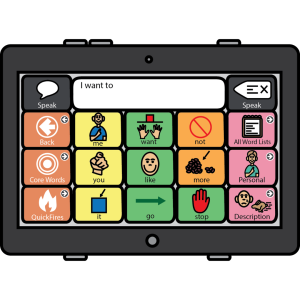
That sounds simple enough. At first thought, you might think, “I’ll just type the user’s name into a button and we are all set.” – sometimes it is that easy – but sometimes it’s not. We all know that not all names are pronounced the same as they are written, so it’s crucial that, after you type in the user’s name into the button, you double-check that the device is saying the name correctly. If the name sounds correct you are good to go! But, what do you do if the device mispronounces the name?
Most, if not all, communication devices have an area where you can input “pronunciation exceptions” for any words included within the device that need to be pronounced differently than they would be pronounced based on their spelling. To activate these pronunciation exceptions and have them saved within the device, you must first type in the word as it appears on the communication device and then pair that with the phonetic spelling of the word, or how it sounds.
This video is an example of how you can do this within the TD Snap application: https://www.instagram.com/reel/C0fdlJ9xOEM/?igshid=NzBmMjdhZWRiYQ==
While this may seem like a simple task, sometimes the simplest tasks are the most important! Being able to say your name and hear someone else say your name correctly is vital for social connection and respect. So, next time you program an AAC user’s device or help an AAC user program their device, don’t forget to check how the device is pronouncing their name and adjust as needed.
by Megan | Jul 15, 2023 | AAC, blog, modeling
Time for an update!
In a previous blog post, I shared how I was working my way through the fantastic chart shared by Angela Moorad, MS CCC-SLP, from Omazing Kids AAC, LLC – Free AAC apps chart. Now, I’m back to update you on my progress, apps that I’ve added to my iPad through the steps in this chart, and the next steps, now that I have access to these apps.
Here are the apps that I have added to my iPad so far:

- TD Snap
- Proloquo
- Grid 3
- Touch Chat
- LAMP Words For Life
- Speak For Yourself
- Proloquo2Go
First and foremost, I want to acknowledge how easy this process has been and I 100% attribute that to the chart referenced above. Download this chart, follow the steps listed for each app and you too can add a variety of AAC apps to your iPad.
Before we move on, I want to be sure that I remind you that, just because you CAN get access to all of these apps, doesn’t mean that you SHOULD, or HAVE to! Let me explain…

While the companies are generous and provide free codes for downloads for their apps, these free download codes are not unlimited. Therefore, if you primarily use one app, want to learn more about a specific app, etc then that would be the app to start with, look at first and then wait on the others. However, if you are an SLP or other professional that provides AAC evaluations, it might make sense for you to have a variety of AAC apps available to you in order to trial them with learners, clients, etc. to determine which app works best for each individual. With that being said, I have downloaded these apps because I am actively providing AAC evaluations for a variety of learners and/or clients.
After being provided access to these AAC apps, my next steps, and what I would encourage you to do as well, is to continue your professional learning about each of these apps. Because, while all the apps provide a way to assist communication for those that need it, each app has its own, individual language system, organization, features, etc. Increasing your knowledge of the different features within systems will assist you when you are completing an AAC evaluation and determining which feature(s) will be best for each individual user.
With the ever-increasing variety of AAC apps available, this task can seem overwhelming, but remember, as I shared in a previous post – it’s ok to take your time. Start with one app, learn the features of that app, practice using that app, etc and then, when you feel confident, move on to a new app, then rinse and repeat.
Have you downloaded the chart yet? Are you working through learning more about AAC apps? Comment below and let us know how it’s going!
by Megan | Jul 2, 2023 | AAC, blog, training
You know how you hear some things and think that they are just too good to be true? Well, getting a bunch of AAC apps for your iPad for free may sound too good to be true, but I promise you it’s both – it’s good AND true!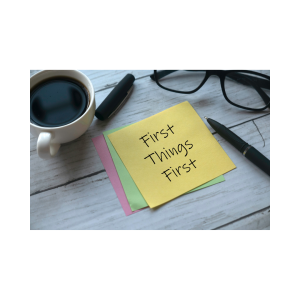
First things first, I want to share that some of these apps that are free are the “lite” version of the full app, meaning that they may not have all of the features that the full app has, such as speaking, editing, etc. However, these “lite” versions are great to access to help determine what a system looks like, how to navigate throughout it, etc as this may help you decide if you would like to pursue the app further for your child, student, client, etc. If you were to pursue the full purchase of an app that you trialed in the “lite” version then all of the features would be opened up and fully usable once the purchase was complete.
 With all of that being said, there are some apps and companies that do provide FREE access to the FULL apps for various professionals working with AAC users to use for evaluation purposes. Angela Moorad, MS CCC-SLP, from Omazing Kids AAC, LLC has created an amazing resource that you can download for free from Teachers Pay Teachers (TPT) that shares a variety of AAC apps as well as how you can access the “lite” version and/or the full version for evaluation purposes. You can find this TPT resource here: Free AAC apps chart. She also has a wealth of information on her website about this and a ton of other AAC resources so make sure you check that out too!
With all of that being said, there are some apps and companies that do provide FREE access to the FULL apps for various professionals working with AAC users to use for evaluation purposes. Angela Moorad, MS CCC-SLP, from Omazing Kids AAC, LLC has created an amazing resource that you can download for free from Teachers Pay Teachers (TPT) that shares a variety of AAC apps as well as how you can access the “lite” version and/or the full version for evaluation purposes. You can find this TPT resource here: Free AAC apps chart. She also has a wealth of information on her website about this and a ton of other AAC resources so make sure you check that out too!
To reinforce the fact that this is not too good to be true, I have been following her chart and the information provided within it and have started adding new AAC apps to my iPad for evaluations without paying a penny! In order to gain access to some of the free, full versions of the apps, the various app development companies may have some additional training that you need to complete prior to receiving the code for downloading the app. These trainings, etc are very helpful to ensure that you know how to best utilize the app to best serve the students, children, and clients that you will be using the app with.
I will share more about the processes I complete while adding various AAC apps to my iPad in future posts so stay tuned!

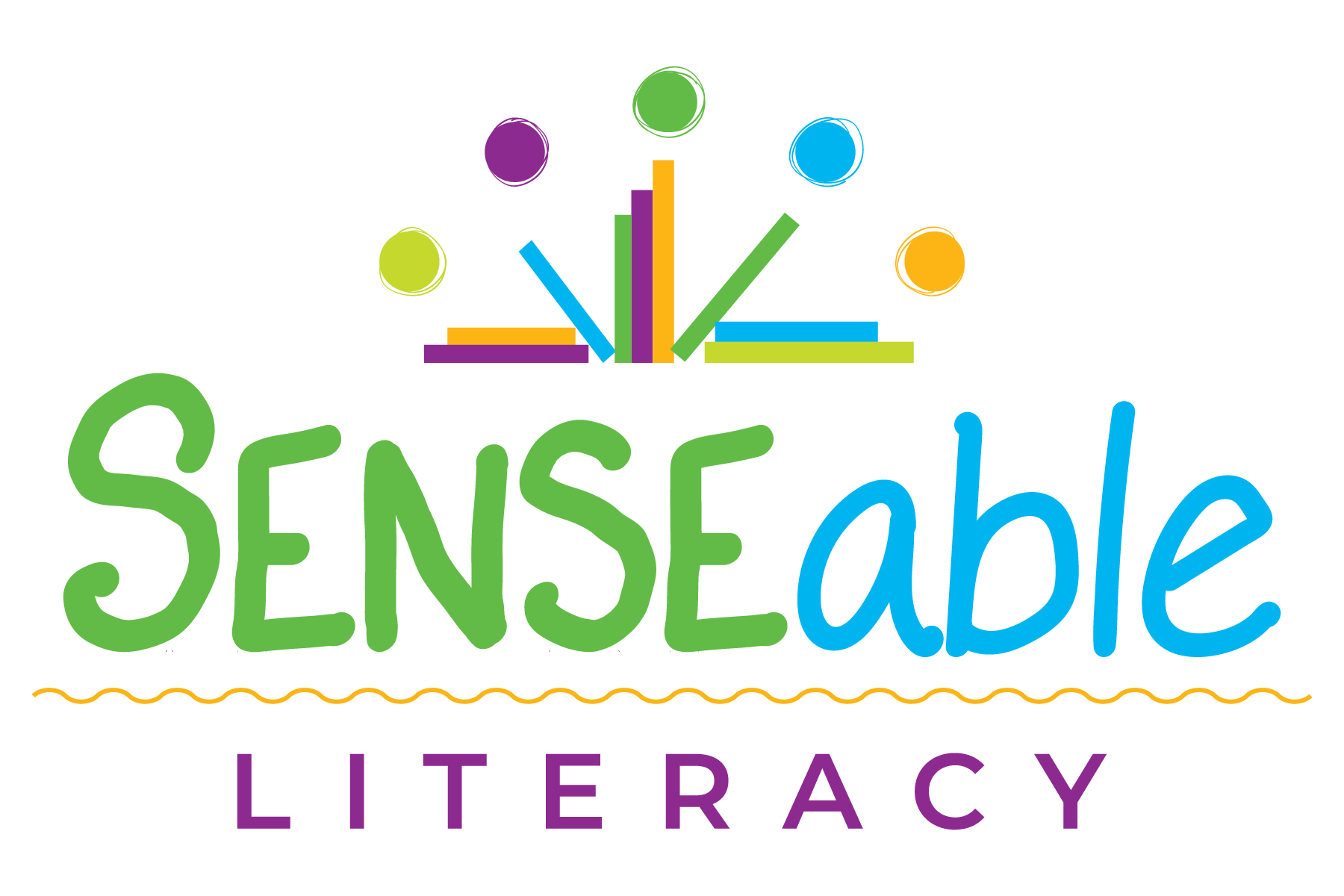


















Recent Comments